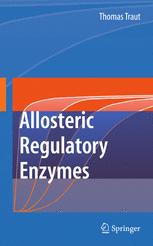

Most ebook files are in PDF format, so you can easily read them using various software such as Foxit Reader or directly on the Google Chrome browser.
Some ebook files are released by publishers in other formats such as .awz, .mobi, .epub, .fb2, etc. You may need to install specific software to read these formats on mobile/PC, such as Calibre.
Please read the tutorial at this link: https://ebookbell.com/faq
We offer FREE conversion to the popular formats you request; however, this may take some time. Therefore, right after payment, please email us, and we will try to provide the service as quickly as possible.
For some exceptional file formats or broken links (if any), please refrain from opening any disputes. Instead, email us first, and we will try to assist within a maximum of 6 hours.
EbookBell Team

0.0
0 reviewsAll enzymes are remarkable since they have the ability to increase the rate of a chemical reaction, often by more than a billion-fold. Allosteric enzymes are even more amazing because the have the additional ability to change their rate in response to cellular activators or inhibitors. This enables them to control the pathway in which they are the regulatory enzyme. Since the effector molecules represent the current status of the cell for a given metabolic pathway, this results in very responsive and balanced metabolic states, and makes it possible for cells and organisms to be appropriately dynamic, and responsive, in a changing environment. This book provides a logical introduction to the limits for enzyme function as dictated by the factors that are limits for life. This book presents a complete description of all the mechanisms used for changing enzyme acticity. Eight enzymes are used as model systems after extensive study of their mechanisms. Wherever possible, the human form of the enzyme is used to illustrate the regulatory features.
While authors often emphasize the few enzymes that have the most remarkable catalytic rates, this survery of enzymes has led to the author's appreciation of some important, general conclusions:
1. Most enzymes are not exceptionally fast; they are always good enough for their specific catalytic step.
2. Although enzymes could always be much faster if they changed so as to bind their substrates more weakly, actual enzymes must be able to discriminate in favor of their special substrate, and therefore they have sacrificed speed to obtain better binding. This means that specific control of individual metabolic steps is more important than overall speed.
3. Results for many hundreds of enzymes establish that a lower limit for a normal catalytic activity is 1 s-1. Most enzymes have a catalytic rate between 10 and 300 s-1.
4. Allosteric regulation always results in a chance in the enzymes's affinity for its substrate. Even V-type enzymes (named for their large chance in catalytic velocity) always have a corresponding change in affinity for their substrate.
Thomas Traut has a PhD in molecular biology and has studied enzymes since 1974. As a professor at the University of North Carolina at Chapel Hill, he has focused on enzyme regulation and taught advanced enzymology to graduate students. Important findings from his research helped to define the mechanism of allosteric control for dissociating enzymes.